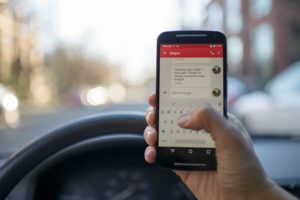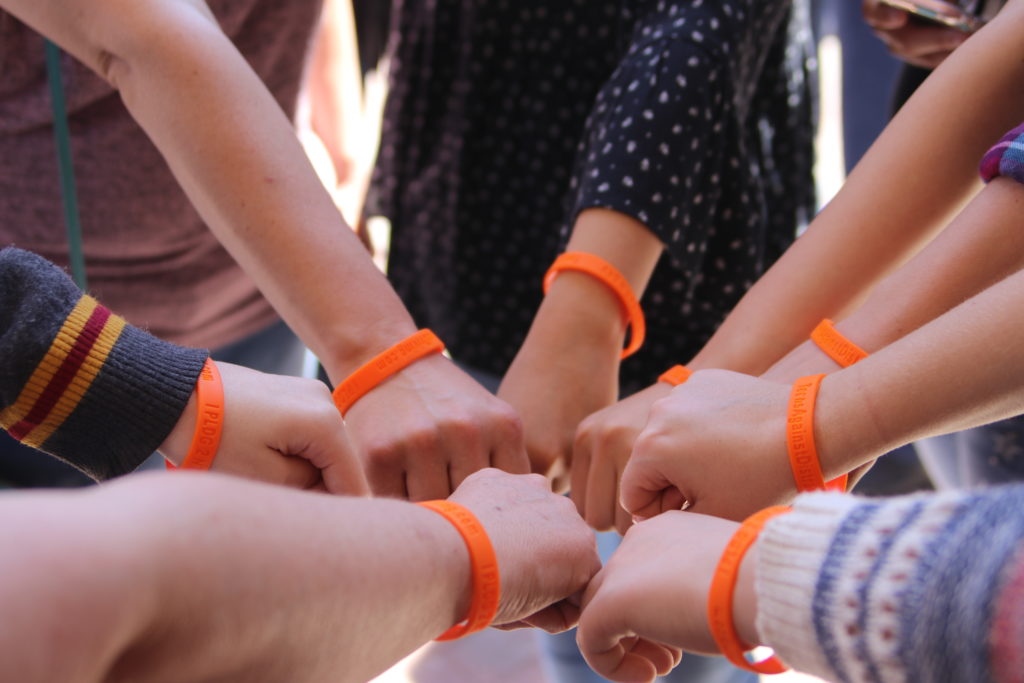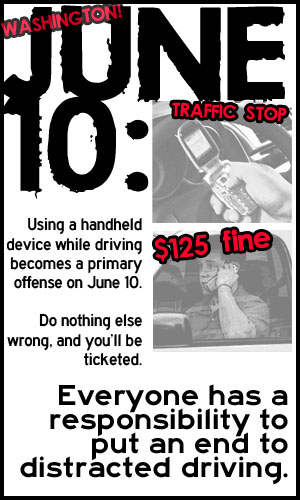Each year, statistics are confirming that distracted driving is a growing problem in the United States. According to the National Highway Traffic Safety Administration, fatalities and injuries caused by distracted driving are increasing with over 3,475 people killed and 391,000 injured in 2015 alone.
Washington State Law: Did You Know?
To combat this “epidemic,” Washington state passed the “Driving Under the Influence of Electronics Act” in 2017 which prohibits using electronic devices—including cellphones, tablets, laptop computers, and personal gaming systems—while behind the wheel. This includes while sitting at a stop sign or red light!
In January 2018, the distracted driving law went into effect, and law enforcement started issuing tickets to violators–$136 for the first offense and $234 for the second offense (within five years). According to the Washington State Patrol, between January and November of 2018, state troopers stopped 21,057 drivers for suspicion of distracted driving with an electronic device and handed out 11,765 citations and 159 written warnings!
Teenagers at Risk
The statistics reflect the continuing need for education about the dangers of distracted driving. This is especially true for teen drivers. A recent six-year study of teen drivers by the AAA Foundation for Traffic Safety determined that 58% of teen auto accidents are caused by distracted driving. The leading causes included:
- Interacting with one or more passengers (15%).
- Using a cell phone (12%).
- Looking at something in the vehicle (10%).
- Observing something outside the vehicle (9%).
- Singing and/or moving to music (8%).
- Grooming (6%).
- Reaching for an object (6%).
How Parents Can Take Action
Parents play a critical role in preventing distracted driving. The NHTSA suggests the following:
- Talk to your teenabout the rules and responsibilities involved in driving. Share some stories and statistics related to teen drivers and distracted driving.
- Learn about Washington’s graduated drivers licensing (GDL) and distracted driving laws. This is an opportunity to educate your teen and establish driving rules such as passenger limit and the hours permitted to drive.
- Set consequences for distracted driving and consider the following options if your teen breaks your rules about distracted driving: suspending driving privileges; further limiting the hours/places permitted to drive; or limiting cell phone usage.
- Set the example and remember that you are a role model for your novice teen driver. It is important to be consistent between the message that you tell your teen and your driving behaviors.
Start Your Own Campaign to Stop Distracted Driving
After witnessing the devastating impact that distracted driving can have on families and their futures, Jason Epstein, a personal injury lawyer at Premier Law Group in the Seattle-Bellevue area, decided that he had to take action. With other law firms around the country, he founded Teens Against Distracted Driving (TADD). The organization’s objective is to combat the rise in fatalities and injuries due to distracted driving through education and awareness.
Jason believes, “Safe driving is a team effort,” and suggests that parents can get involved by starting their own campaign against distracted driving. TADD can help in a variety of ways:
- Supply a “starter kit” of TADD educational brochures, presentation materials, and pledge cards;
- Market your campaign on the TADD and Premier Law Group website and Facebook page—we can post photos and videos to help motivate people;
- Provide TADD wrist bands for those who “pledge” of their promise not to text and drive; and
- Welcome new ideas and ways to motivate others!
To see impactful ways teens and others in the community are helping to keep our roads safe, visit TADD’s website.
If you want more information or have any questions about TADD, please feel free to contact Jason Epstein at 206.285.1743 or Jason@premierlawgroup.com



